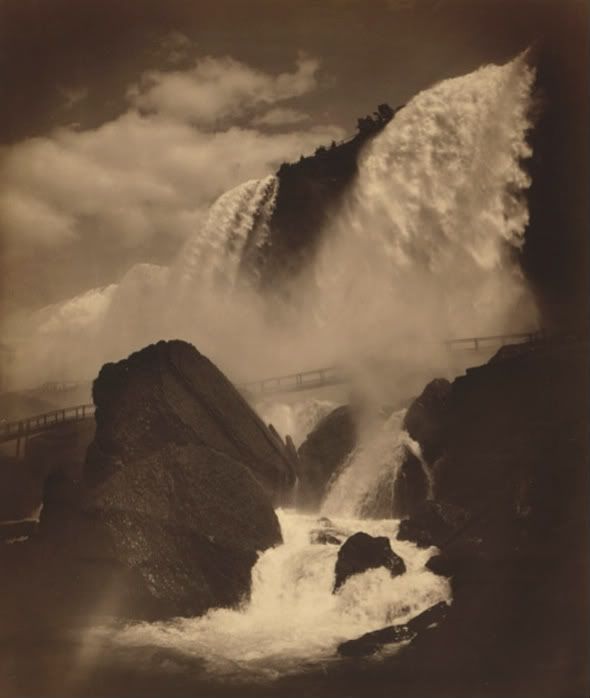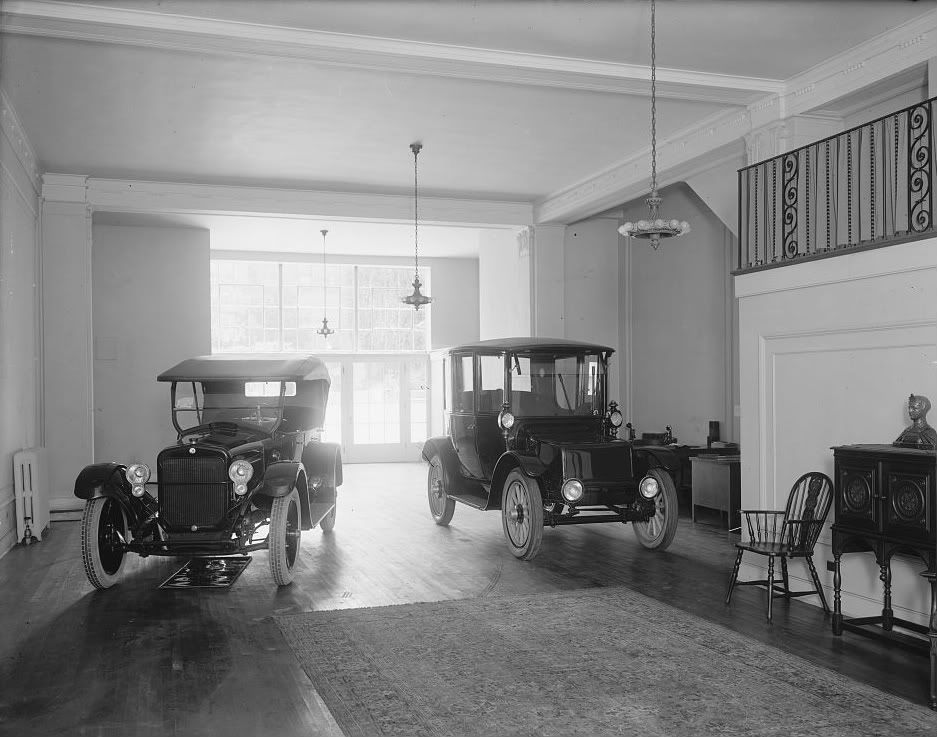The Detroit Electric.

In 1920 the name of the Anderson Carriage company was changed to The Detroit Electric Car Company, with the car maker detaching its body business to a separate entity that became part of Murray Body and the motor/controller business which became Elwell-Parker.
 A Detroit Electric automobile on promotional tour through mountains from "Seattle to Mt. Rainier"1919.
A Detroit Electric automobile on promotional tour through mountains from "Seattle to Mt. Rainier"1919. More Information.
The Photography Of Marion Post Wolcott.
 Cabins imitating the Indian teepee for tourists along highway south of Bardstown, Kentucky July 1940.
Cabins imitating the Indian teepee for tourists along highway south of Bardstown, Kentucky July 1940. Natchitoches, Louisiana 1940.
Natchitoches, Louisiana 1940. Natchez, Mississippi August 1940.
Natchez, Mississippi August 1940.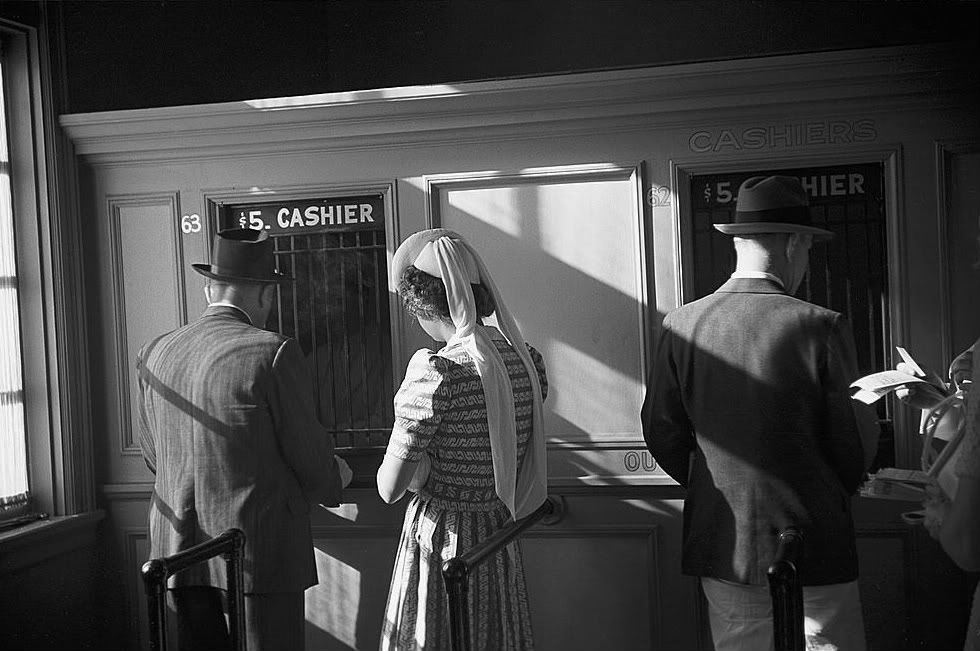 The horse races, Hialeah Park, Miami, Florida 1939.
The horse races, Hialeah Park, Miami, Florida 1939. Sampling and classing cotton in classing rooms of cotton factor's office, Memphis, Tennessee 1939.
Sampling and classing cotton in classing rooms of cotton factor's office, Memphis, Tennessee 1939.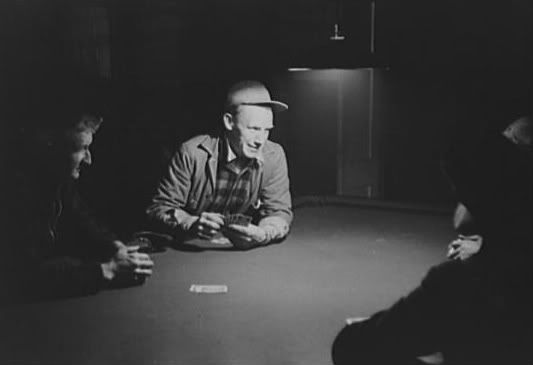 Farmers playing cards on a winter morning, Woodstock, Vermont 1939.
Farmers playing cards on a winter morning, Woodstock, Vermont 1939. One of the hazards of driving over Kentucky mountain roads. Photograph taken Near Jackson, Breathitt County, Kentucky, July 1940.
One of the hazards of driving over Kentucky mountain roads. Photograph taken Near Jackson, Breathitt County, Kentucky, July 1940. Itinerant preacher from South Carolina saving the souls of the construction workers at Camp Livingston job near Alexandria, Louisiana, December 1940.
Itinerant preacher from South Carolina saving the souls of the construction workers at Camp Livingston job near Alexandria, Louisiana, December 1940. Natchez, Mississippi, August 1940.
Natchez, Mississippi, August 1940. Mountaineer trying to change a tire with a fence post as a jack. Up South fork of the Kentucky River, Breathitt County, Kentucky 1940.
Mountaineer trying to change a tire with a fence post as a jack. Up South fork of the Kentucky River, Breathitt County, Kentucky 1940. Guest at a Sarasota trailer park, Sarasota, Florida. Beside her garden made of shells and odds and ends. The camp has garden club for members organized for the purpose of making the surroundings attractive, January 1941.
Guest at a Sarasota trailer park, Sarasota, Florida. Beside her garden made of shells and odds and ends. The camp has garden club for members organized for the purpose of making the surroundings attractive, January 1941. Corn shocks and fences on a farm near Marion, Virginia October 1940.
Corn shocks and fences on a farm near Marion, Virginia October 1940. Shopping at a grocery store, Lakeland, Florida.
Shopping at a grocery store, Lakeland, Florida.Washington D.C. Streets In The 1920's.

Picture 2: 13th & G Streets Washington D.C. 1924.
The second set of pictures is again from an unidentified street, but is set over three exposures.
In this set you can see people come and go along the streets in front of the shops, while the shopkeeper at the confectioners comes outside and opens the awning over the shop windows.

Picture 1:Washington, D.C. 1924 unidentified street.

Picture 2: Washington, D.C. 1924 unidentified street.

Picture 3:Washington, D.C. 1924 unidentified street.
 Unidentified Washington street 1923.
Unidentified Washington street 1923.
 Trolley car passing street construction at corner of Pennsylvania & F. St., looking toward Treasury Building, Washington, D.C. 1919.
Trolley car passing street construction at corner of Pennsylvania & F. St., looking toward Treasury Building, Washington, D.C. 1919.
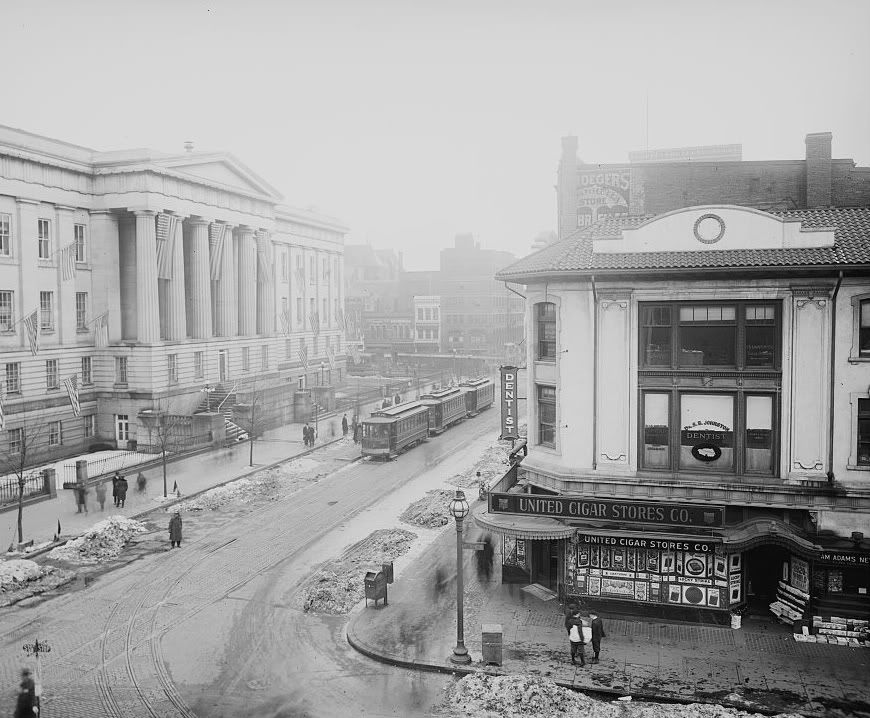 9th & F Streets 1919.
9th & F Streets 1919. Finally another successive photograph set, again showing an unidentified street.
 Picture 1: Unidentified Washington street.
Picture 1: Unidentified Washington street. Picture 2: Unidentified Washington street.
Picture 2: Unidentified Washington street.
Early Twentieth Century Japanese Woodblock Prints.
 Sanbashi Bridge in Fukugawa at night.
Sanbashi Bridge in Fukugawa at night. Kojima Island.
Kojima Island. Snipe bird in reeds by Koson Ohara.
Snipe bird in reeds by Koson Ohara. Evening sailboats by Koson Ohara.
Evening sailboats by Koson Ohara. Sailboats and Mount Fuji by Konen Uehara.
Sailboats and Mount Fuji by Konen Uehara.Lining Up For Coal And Water By Jack Delano.
Steamboat Approaching The dock By George Barker.
Rudder and screws of The S.S. Imperator 1912.
With the outbreak of war in 1914 she was confined to port for the duration, until she was employed by the U.S Navy as the USS Imperator, a troop ship to return soldiers home from the front at the end of the war. After this assignment, she was given over to the British as part of the war reparations and renamed the RMS Berengaria under the Cunard line, were she sailed for the rest of her career.





